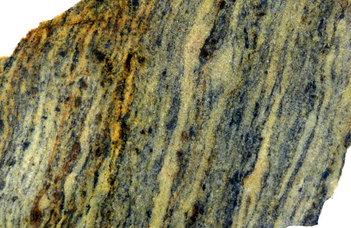Visualization of microstructures from ice to subduction zones

26. October 2020. 17:00 - 18:00
online
26. October 2020.17:00 - 18:00
online
With the advance and wide(r)-spread availability of novel analytical techniques, imaging and quantitative analysis of microstructure of geological materials is becoming a standard in many petrological studies. One of the techniques, which has gained increasing popularity in this field during the past decade, is the electron backscatter diffraction (EBSD). By now, this technique not only allows for the routine analysis of complicated rock microstructures, but it is also possible to carry out in-situ and semi in-situ experiments in the sample chamber on materials that behave analogous to major constituent minerals of the deep Earth interior. With this latter approach, the temporal evolution of microstructures can now be addressed, which is crucial for the better understanding of processes that occur at the grain scale in geological materials during deformation or annealing. On the other hand, in addition to the need for advanced microstructural analysis of 2-D thin sections, there is also an increasing demand for the reconstruction of microstructure in the rock volume. Representative 3-D microstructure of large geological samples composed of mm to cm-sized grains, however, is limited by currently available analytical techniques. X-ray micro computed tomography (µ-CT) is a powerful tool for imaging relatively large sample volumes with sufficient resolution but it does not allow for crystal orientation information, whereas EBSD provides quantitative microstructural data that is often difficult to translate into 3-D. Serial sectioning techniques combined with EBSD produce real 3-D microstructural data but they are destructive methods with very restricted available sample volume (max. 10-6 cm3).
In this contribution, Károly Hidas will show case studies that cover (i) the visualization of microstructural evolution of polycrystalline ice as an analog to that of anisotropic minerals in the deep lithosphere, and (ii) the reconstruction of 3-D microstructure by semi-destructive combination of µ-CT and EBSD in a coarse-grained rock sequence that formed by the high-pressure dehydration of antigorite serpentinite in a fossil subduction zone.
Károly joined the Lithosphere Fluid Research Lab as a high school student in 1999 and began his scientific research on upper mantle derived xenoliths under the mentorship of György Falus, István J. Kovács and Csaba Szabó. Károly Hidas graduated in 2006 as a geologist at the Eötvös Loránd University, where he also defended his Ph.D. thesis in 2009. During his Ph.D. years, he studied the relationship between deformation and metasomatism of the subcontinental lithospheric mantle beneath the Carpathian-Pannonian Region and Jeju Island (South Korea). During his postdoctoral career, Károly has studied the microstructures of –mostly– ultramafic rocks exposed on the surface from diverse tectonic settings, driven by the strive for a better understanding of the feedback of fluids/melts on the textural evolution of the deep Earth interior.
Since the formation of the Lithosphere Fluid Research Laboratory (LRG) in 1998, the group led by Csaba Szabó published more than 100 peer-reviewed scientific publications, and more than 50 TDK and OTDK winning student theses. In their scientific work, the students of the LRG cover broad areas of geochemistry of the lithosphere and its fluids, such as fluid and melt inclusions in various geological environments, petrology of the lower crust and the upper mantle, geological storage of CO2, the source and fate of radon, or environmental and urban geochemistry of former industrial centers. The LRG initiated this seminar series in 2019, in order to invite former student of the laboratory (who are now accomplished scientists) to present their research to the next generation of geochemists.
The talk will be hosted on Zoom, in order to participate please register HERE.
